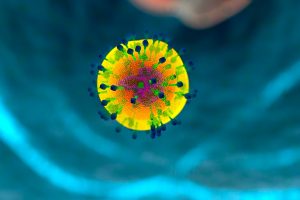
The Significance of the “KGS Practice” in Pathology and Oncology Part 14
PART 14: TWO SAMPLE CASES: Case 2
TWO SAMPLE CASES
In these two examples, which are not actual cases, the three parts of the KGS methodology, the “KGS Grading”, “KGS Pathology Report” and “KGS Clinical Management”, are comprehensively demonstrated with the usage of the KGS parameters and KGS Index.
Case 2
Grade III Corticotroph Pituitary Adenoma
This case of corticotroph pituitary adenoma, an extremely rare tumor, which is well-known for its diagnostic and management dificulties and poor prognosis, has been chosen here as a sample case to show how easily its diagnostic and prognostic follow-up and management would be achieved with the usage of the KGS Grading.
This is a Grade IIIB Corticotroph Pituitary Adenoma which later showed malignant transformation. The patient was a 43-year old married woman. Her macrocorticotroph pituitary adenoma was partially resected upon diagnosis (1st KGS Pathology Report). Eight months later, the tumor transformed into a pituitary carcinoma and was treated with surgery and radiotherapy (5th KGS Pathology Report). At the end of the first year, it recurred with leptomeningeal metastases and an intensive treatment program with radiotherapy and chemotherapy started. The prognosis was poor, and around the middle of the second year, she developed ovarian metastasis. As the treatment palliatively continued, she further developed cerebellar and pulmonary metastases and she died shortly after.
Part 1: KGS GRADING
With KGS Scoring and KGS Index
KGS Scoring
The Parametric Scores in the 1st Pathology Report
Here, the detailed calculations of the parametric scores in the 1st pathology report of the case are shown:
1. Prime Tumor Cells (PTC)
The PTC score is based on the tissue’s mean Grade III cells’ PTC percentage (PTCP). The 10 HPFs here show their Grade III cells’ PTC percentages (PTCPs) as: 95%, 85%, 90%, 94%, 89%, 95% 90%, 100%, 93%, 98%
95+85+90+9(HPFs)4+89+95+90+100+93+98 929
Mean PTC = ——————————————————- = ——– = 92.9
10 10
Mean PTC 92.9
PTC Score = ———————– = ——— = 9.29
10 10
KGS Impact Factor (IF): 0.3
Effective PTC Score = PTC Score X IF = 9.29 X 0.3 = 2.78
2. Mitotic Tumor Cells (MTC)
Numbers of mitoses in 10 High Power Fields (HPFs): 1, 3, 2, 2, 3, 2, 1, 2, 1, 2
1 + 3 + 2 + 2 + 3 + 2 + 1 + 2 + 1 +2 19
MTC Score = —————————————————– = ——- = 1.9
10 10
KGS Impact Factor (IF): 2
Effective KGS Score = KGS Score X IF = 1.9 X 2 = 3.80
3. Circulating Tumor Cells (CTC)
Not Applicable (No circulating tumor cells)
CTC Counts: 0
CTC Score = 0
KGS Impact Factor (IF): 3
Effective CTC Score = CTC Score X IF = 0 X 3 = 0
4. Necrotic Tumor Cells (NTC)
Not Applicable (No necrosis)
NTCs percentages (NTCP) in 10 HPFs: 0%, 0%, 0%, 0%, 0%, 0%, 0%, 0%, 0%, 0%
0+0+0+0+0+0+0+0+0+0 0
Mean NTC = ————————————– = ——- = 0
10 10
Mean NTC 0
NTC Score = ———————- = —— = 0
10 10
KGS Impact Factor (IF): 2
Effective NTC Score = NTC Score X IF = 0 X 2 = 0
5. Metastases (MET)
Not Applicable (No metastases)
MET Score = 0
Impact Factor (IF): 5
Effective MET Score = MET Score X IF = 0 X 5 = 0
KGS Index = PTC + MTC + CTC + NTC + MET = 2.78 + 3.80 + 0 + 0 + 0 = 6.58
Part 2: KGS PATHOLOGY REPORT
With KGS Diagnostic Profile and KGS Cellular Profile
KGS Diagnostic Profile in the 1st Pathology Report:
Biopsy: Pituitary Tumor
Date of Collection: 14.09.2012
Date of Report: 23.09.2012
Clinical Diagnosis: Corticotroph Pituitary Adenoma
Microscopic Description: Clustered ACTH-positive adenohypophyseal Grade IIItumor cells are settled throughout the tumor tissue in a sinusoidal pattern varying from Grade IIIA to Grade IIIB with distinct cellular borders and oval to round nuclei. While the Grade IIIB cells dominate, the Grade IIIA cells occupy 30% of the Grade III area. Total number of mitotic (Grade IIIm) cells in 10 HPFs: 13 (12/10PHF: 6 Grade IIIAm, 7 Grade IIIBm). Adjacent to the Grade III area are clearly seen rare groups of Grade II cells and neat sporadic locations of Grade I cells.
KGS Grade: IIIB
Overall KGS Grade: IIIB
KGS Index: 2.20
KGS Prognostic Range: L
Pathologic Diagnosis: “Grade IIIA Corticitroph Pituitary Adenoma”
KGS Diagnostic Profile in the 5th Pathology Report:
Biopsy: Pituitary Tumor
Date of Collection: 14.05.2013
Date of Report: 20.05.2013
Clinical Diagnosis: Corticotroph Pituitary Carcinoma
Microscopic Description: LPFs and HPFs straightly show the malignant transformation of the original tumor Corticotroph Pituitary Adenoma into a manifest Grade VIIA Corticotroph Pituitary Carcinoma with abundantly settled Grade VIIA cells among which rare groups of Grade VIB cells also take place. The Total disappearence of the predecessive Grade III cells and the absence of Grade IV-V cellshints an exteremely rapid progression of the transformation to the carcinoma.Total number of mitotic (Grade VIIAm) cells in 10 HPFs is 16 (16/10PHF).
KGS Grade: VIIA
Overall KGS Grade: VIIA
KGS Index: 28.14
KGS Prognostic Range: U
Pathologic Diagnosis: “Grade VIIA Corticotroph Pituitary Carcinoma”.
Part 3: KGS CLINICAL MANAGEMENT
With KGS Prognostic Profile and KGS Prognostic Chart (KGS Chart)
KGS Prognostic Profile
The periodic KGS Index values make up the KGS Prognostic Profile.
DATE……….KGS INDEX……KGS Prognostic Range….KGS GRADE
23.09.12………..6.58.………………………..L…………………………..IIIB……
17.11.12………..9.75…………………………M…………………………..VB…….
21.01.13……….14.50………………………..H………………………….VIA…….
09.03.13……….21.35………………………..H…………………………..VII…….
20.05.13……….28.14………………………..H………………………….VIIA……
14.07.13……….33.05………………………..E………………………….VIIB……
18.09.13……….35.85………………………..E………………………….VIIB……
11.11.13……….40.90………………………..E…………………………..VIIB……
15.01.14……….44.20………………………..U………………………….VIIB……
22.03.14……….47.35………………………..U………………………….VIIB…….
Table 7: KGS Prognostic Profile. In this “KGS Prognostic Profile” table in two versions, the parametric KGS Profile of Case 2 through its prognosis is shown in the standard format seen in its pathology reports and clinical files. In this pituitary tumor of malignant transformation, we see a dramatically changing KGS Index over a period of 18-month of clinical management between a Grade IIIB tumor, which is an adenoma, and a Grade VIIB tumor which is an inoperable, highly aggressive metastatic pituitary carcinoma.
KGS Prognostic Profile
Parameter Parametric KGS Score
_____________________________________________________________
IIIB VB VIA VIB VIIA VIIA VIIB VIIB VIIB VIIB
________________________________________________________
PTC 2.78 3.00 6.30 8.45 8.84 9.25 9.85 9.10 10.00 10.00 ________________________________________________________
MTC 3.80 6.75 8.20 10.40 12.25 13.60 10.85 11.70 10.65 12.70
________________________________________________________
CTC 0 0 0 2.50 5.20 6.70 7.15 7.90 6.55 8.15
________________________________________________________
NTC 0 0 0 0 1.85 3.50 3.00 2.20 2.00 1.50
________________________________________________________
MET 0 0 0 0 0 0 5 10 15 15
________________________________________________________
KI 6.58 9.75 14.50 21.35 28.14 33.05 35.85 40.90 44.20 47.35
Date 23.09.12 I I I I I I I I 22.03.14
________________________________________________________
Table 8: KGS Prognostic Profile. This table of the detailed “KGS Prognostic Profile” shows the parametric KGS Data of the Sample Case 2, a Grade III corticotroph pituitary adenoma, with a dramatically changing KGS Index in less than two years. Here, a gradually worsening prognosis is clearly seen.
KGS parameters: PTC: Prime Tumor Cell, MTC: Mitotic Tumor Cell, CTC: Circulating Tumor Cell, NTC: Necrotic Tumor Cell (of high necrosis), MET: Metastasis. KGS grades> III: Hyperplastic (Non-neoplastic) grade; V: Dysplastic (Pre-neoplastic) grade; VIA, VIB: Neoplastic grades; VIIA, VIIB: Anaplastic grades. The dates of the KGS pathology reports are shown below the base line.
KGS Prognostic Chart (KGS Chart)
Presenting this tumor’s KGS Prognostic Profile, the KGS Prognostic Chart (KGS Chart) below is the statistical distribution display of the clinical prognosis of the case (Figure 6) with the tumor’s changing ranges and grades within the progression of theKGS Index through the prognostic period.
…..IIIB…..VB……..VIA…….VIB……VIIA……VIIA……VIIB…….VIIB….VIIB….VIIB
U……………………………………………………………………………………………………………….47.35.
………………………………………………………………………………………………………44.20…………
E………………………………………………………………………………………..40.90…………………….
…………………………………………………………………………….35.85…………………………………..
H…………………………………………………………….33.05……………………………………………….
…………………………………………………..28.14…………………………………………………………….
M…………………………………..21.35…………………………………………………………………………
…………………………14.50………………………………………………………………………………………
L……………9.75…………………………………………………………………………………………………..
……6.58…………………………………………………………………………………………………………….
N………………………………………………………………………………………………………………………
_____________________________________________________
16.02.13……. ı……….. ı……….. ı…………. ı…………. ı…………. ı………….. ı……….. ı…..15.08.14
Figure 6: KGS Prognostic Chart (KGS Chart). This standard KGS Chart of the patient in Case 2, a Grade III corticotroph pituitary adenoma, displays the “Prognostic KGS Ranges” together with a rapidly increasing “KGS Index” by dates, and shows how dramatically this pituitary adenoma, a benign tumor, transforms into an inoperable pituitary carcinoma despite an opportune intensive radiotherapy and chemotherapy program through which the Grade IIIB tumor progressively upgrades ending up in Grade VIIB. Prognostic KGS Ranges> N=Normal, L=Low, M=Medium, H=High, E=Extreme, U=Ultimate. KGS Grades> III: Hyperplastic (Non-neoplastic) grade; V: Dysplastic (Pre-neoplastic) grade; VIA, VIB: Neoplastic grades; VIIA, VIIB: Anaplastic grades. The dates of the KGS pathology reports are shown below the base line.
Copyright © 2010-2017 M. M. Karindas, MD



